Like any other form of climbing, being a tad climber will force you to have different sets of protection gear. There are two categories: passive climbing protection devices, which comprise immovable gear parts, and active rock climbing protection gear, consisting of movable parts. Cams and wedges fall under active pro, which we will be looking at in this guide.
While the concept of how to choose cams or how to choose wedges may seem obvious, buying and using them is not as direct as it seems. There is a lot to consider. And it all depends on the climbing routes.
In cam, you have to look at the number of axles, the degree of enlargement, the number of lobes, and how the stem is designed. You also have to see if your wedge is spring-loaded. If not, what will your rock experience be? So let’s see.
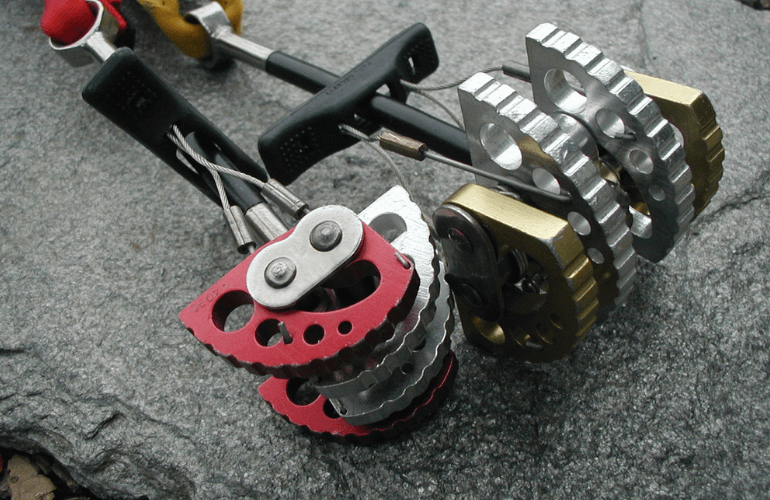
Active Rock Climbing Protection Gear: Cams
Usually, cams are composed of three to four aluminum pieces referred to as cam lobes. On pulling the spring-loaded trigger cable, the metal chunks retract, which causes a narrowing in the cam device.
Upon releasing the trigger, the cm lobes enlarge to fit the rock face. If the cam is correctly placed, it offers a perfect hold, especially on parts where passive gears will not hold.
Active Rock Climbing Protection: Cams are the most prominent form of active pro. On the other hand, the uncommon spring-loaded wedges are used by traditional climbers with more climbing experience. Most traditional climbers have cam sets in their rack.
They are a bit expensive but easy to place. When shopping for cams, you must consider the cam lobe number, how the stem is designed, the range of expansion, and the axle number. Depending on your experience, you may want to add other special gear like spring-loaded wedges to your arsenal.
What to Look for When Buying Cams?
When buying cams, why should you look at the lobe and axle numbers, expansion range, and stem design?
The Number of Lobes
A regular cam will have either three or four-cam lobes, which are distinctly separated by a spring. During a fall, the cam gets weighted, and the downward force is subjected to the lobes. They then stretch the rock to hold the cam in position.
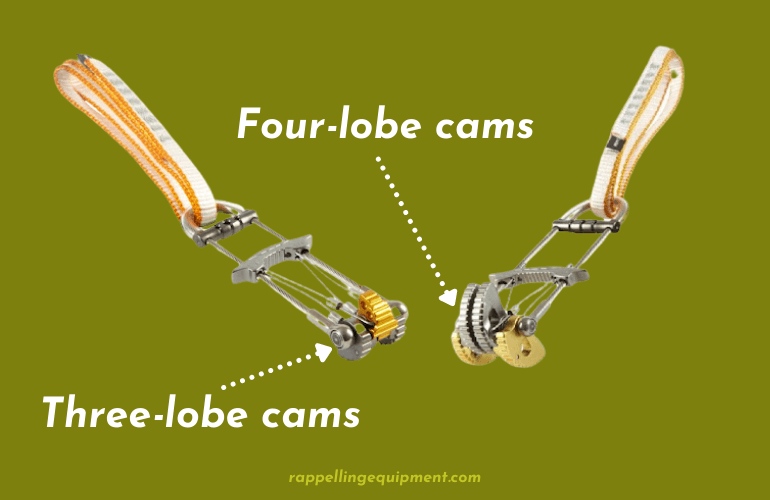
Three-lobe cams pros:
- It has a perfect narrowing, unlike cams with four lobes, which suffices for a precise fit in tighter places like pin scars and rocks damaged by the pounding of pitons.
- While climbing, a slight movement can cause you lots of harm. However, the three-lobe cam is less susceptible to movement than the four-lobe cam. So you should expect it to remain in the same position while climbing.
- When going up, you have to be as light as possible. That means the gear you are carrying around should weigh less, and that’s what you get with the three-lobed cam, unlike the four-lobed cam, which is a bit heavier.
Three-lobe cams cons:
- You may not want to gamble with your safety while climbing. Your life depends on the cam. If it offers less contact with the point where it is attached, the placement is not secure. A three-lobe cam offers less contact with the rock surface.
Four-lobed cams pros:
- The four-lobe cam is an excellent choice for climbing beginners and those who want maximum safety at all times. It’s the standard cam whose design offers maximum contact with the rock, unlike the three-lobe mentioned above. It provides a nearly perfect, secure placement.
Four-lobed cams cons:
- Therefore, it is heavier and will increase your backpack’s weight, which is somewhat inconvenient for climbing, as you need to be as light as possible.
- Since their profile is wider, they seem inconceivable when they need to fit into small, shallow cracks.
The Stem Design
Until recently, cams featured rigid stems. It guaranteed their durability. However, there were some black spots on the white cover.
That was placed on horizontal cracks. As of now, cams feature flexible stems which bend when weighted. They are a perfect choice if you are going to face horizontal cracks. Additionally, the flexible design is featured in two distinctive ways, the single cable stem, and the U-stem.
1) The single-cable stems
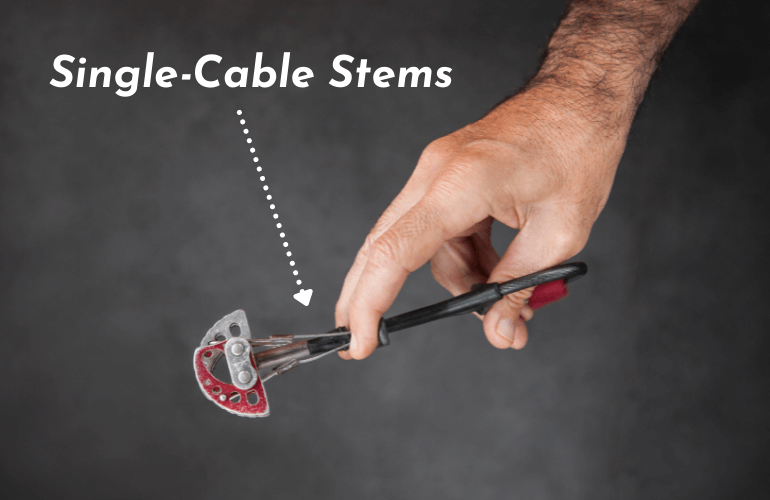
The reason most climbers opt for single cable stems lies within their slim structure. They are designed to embrace narrow cracks and irregularly shaped objects to provide a perfect fit.
As such, where wider stems fail, the single cable stem saves the day. Additionally, climbers with large hands find it difficult to operate a U-stem cam, compared to a single-cable stem cam, which is easy to handle.
Single cable stems pros and cons:
With single cable stem cams, you will have to use your forefinger properly, thumb, and middle finger for you to pull the trigger. As such, you can easily lose your grip on it. On the other hand, a U stem can be operated with only one finger and the thumb, thus reducing the pressure of switching your fingers or even losing the grip.
2) The U-Stem cams
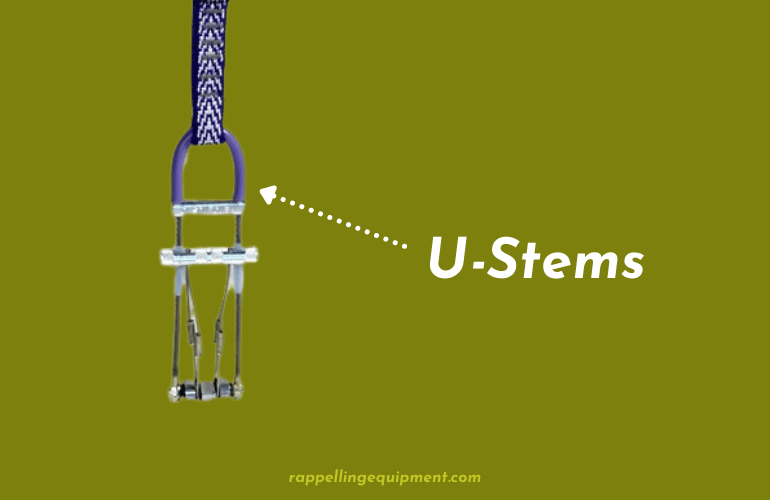
The U stem features a trigger within the U-shape. It is therefore easy to operate using the forefinger and thumb. Again, they retract easily when compared to single stem cams.
U stem stems pros and cons:
- The U-shape means it has a larger profile, hence proving difficult to insert into small spaces. Also, getting your thumb in the curved part of small-sized cams tends to be hard.
- When buying a cam, it will be wise to grab it by your hand and see the type of trigger action you are comfortable with. The ease of use and comfortability will make a great difference when placing them quickly with one hand.
The Number of Axles
In the cam assembly, the axle provides the rotational axis for the lobes to rotate about. Cam devices can be created with a single axle. In this scenario, all the lobes spin around the same axis or with double axles. The two sets of lobes revolve around two axles that are somewhat away from each other.
Nonetheless, each design has its upsides and downsides.
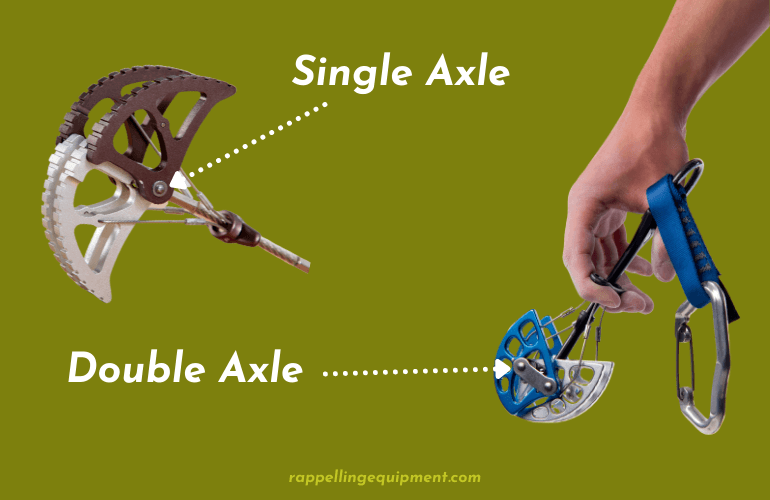
Double axles
Double axles pros:
- A cam with double axles provides room for more expansion.
- Again, a double axle cam is a bit tougher and stronger when compared to single-axle cams.
Double axles cons:
- Since there’s an extra axle in question, there is a cause for concern about excess weight. It is thus heavier than a single-axle cam.
Single axle cams
Single axle cams pros:
- They are lightweight due to the smaller number of axles.
Single axle cams cons:
- They forgo a slight expansion range and strength, unlike double axle-cams.
The Range of Expansion
On any cam, the range of the expansion is a factor that should be closely looked at. It’s how the cam enlarges when the lobes contract or wholly expand. A cam with a greater enlargement range will fit into more spaces, unlike a cam with a minor expansion range.
As a result, getting a cam with a greater expansion range means you get to carry fewer cams without forgoing protection. You will still be able to cling to several cracks just as you would with several minor range expansion cams. Additionally, carrying fewer cameras means your backpack will be lighter.
Offset Cams
Cam lobes on conventional cams are uniform in dimension and structure. However, an offset cam with two bigger lobes and small twin lobes is still made by certain manufacturers. In offset cams, the concept is that the different sizes of the lobes allow the cam to rest firmly in gaps that are not uniform, such as inward or outward curvatures.
Typically, trad hikers will create a rack with a conventional (non-offset) cam, then subsequently incorporate offset cams only if they think it may come in handy when using certain climbing routes.
Certain climbing places, like Yosemite, are widely recognized for having fissures that are easily accommodated with offset cams. Offset cams also come in handy during aid climbing, where you will frequently be the cam in piton remnants (pin scars).
Active Rock Climbing Protection Gear: Spring-Loaded Wedges
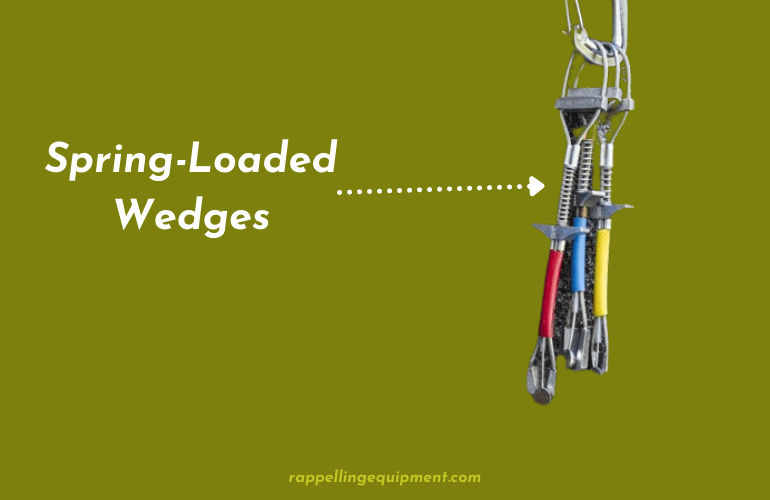
You have particularly spotted wedges in wood cutting. To explain the practicality, they fit into the wood opening to cause an opening. Now, unlike in woodcutting, climbing wedges are tapered, and the wedge is further threaded on a wire.
Climbers use this for protection by clipping it into cracks on the rock. It provides a place to attach a quickdraw and the rope threads through the quickdraw.
When climbing, you should preferably use spring-loaded wedges. These active protection components contain a tiny sliding portion that increases the wedge’s dimension once inserted into a gap. Using it is just like placing a cam.
You first squeeze the spring-loaded lever to compress the gliding piece, insert the wedge between the rock’s surface, then press the lever to let the gliding piece return to normal size. The moving component presses on the rock and the bigger wedge section to keep the wedge in place.
Why should you use spring-loaded wedges?
- They fit in smaller spaces and have parallel-sided faces where other cams won’t fit.
- They have greater strength, unlike large-sized cams.
- Again, they are light, which is convenient for mountaineering activities.
Why may wedges not be the best choice?
- It’s harder to get them out of the cracks.
- The small size tends to have a lesser hold when compared to a larger nut.
- The spring-loaded design leaves a margin for movement when placed inside a rock.
- They are not versatile like cams.
Final Thoughts on Active Rock Climbing Protection Gear
Okay, ladies and gentlemen, how to choose a wedge or how to select a cam solely depends on your mountain experience. That’s how skillful you are, how deep you understand the route you will be using.
If you have beginner skills, for instance, using three-lobed cams will be unwise. So go through the list above and assess yourself to determine which type of cams and wedges are best for you.
